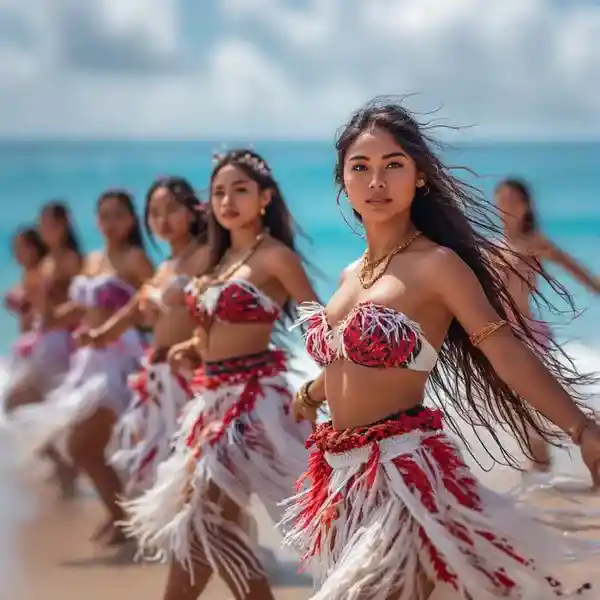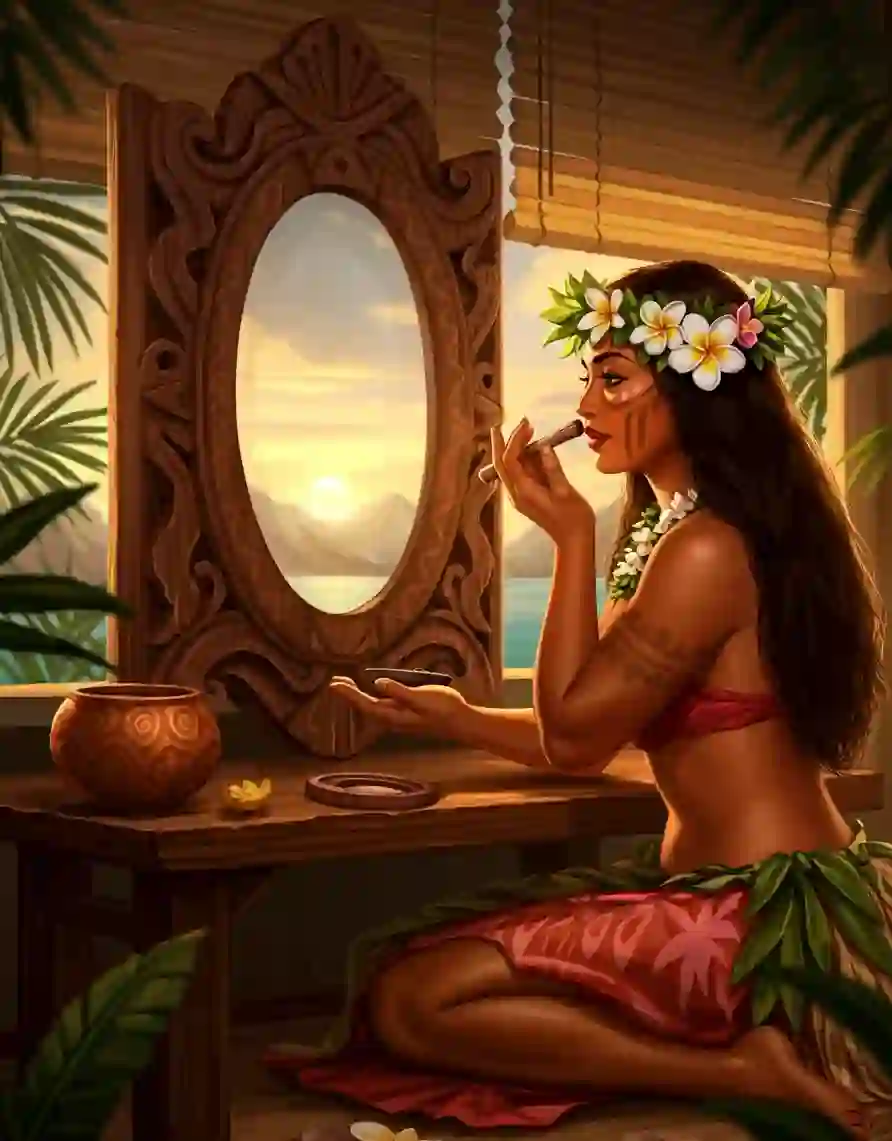
Table of Contents
TogglePolynesian Clothing: Traditional and Modern Styles Across the Islands
Polynesian clothing is a rich tapestry that reflects the vibrant cultures, climates, and histories of the Pacific islands. With roots tracing back centuries, traditional Polynesian clothing is often made from materials that grow naturally on the islands, while modern styles are a fusion of tradition, Western influence, and contemporary fashion. The islands that make up Polynesia, including Hawaii, Tahiti, Samoa, Tonga, Fiji, and the Cook Islands, each have their unique styles, but they also share commonalities. This article will explore the traditional and modern clothing of Polynesia, highlighting both the cultural significance and the evolution of these garments.
1. Traditional Polynesian Clothing: A Reflection of the Environment and Culture
Traditional Polynesian clothing is closely tied to the natural environment and the materials readily available. Most garments were designed to provide comfort in the tropical climates and to reflect social status, gender, and cultural practices.
a) Hawaiian Traditional Clothing: Kapa and the Malo
In ancient Hawaii, clothing was crafted from the bark of the wauke (paper mulberry) tree, which was processed into a material known as kapa (or tapa in other regions). Kapa was a versatile fabric, used for everything from clothing to blankets and ceremonial items. The designs on kapa were often symbolic and unique to the wearer’s family or community.
-
Malo: A narrow strip of kapa cloth worn by men, tied around the waist and passed between the legs. It was the standard attire for Hawaiian men, particularly in informal settings.
-
Pāʻū: A skirt worn by women, wrapped around the waist, sometimes covering the upper body as well.
-
Kihei: A rectangular shawl or cape worn over one shoulder, often used for ceremonial purposes or by chiefs and those of high rank.
Hawaiian chiefs and royalty, known as ali’i, adorned themselves with elaborate cloaks made from bird feathers, called ʻahuʻula, as a symbol of power and prestige.
b) Samoan Clothing: The Lavalava and Siapo
In Samoa, traditional clothing is practical, adaptable, and tied to the islands’ identity.
-
Lavalava: A versatile wrap-around skirt worn by both men and women. Made from either tapa cloth or woven materials, the lavalava was tied around the waist and could be worn in various lengths, depending on the occasion.
-
Siapo: A decorated cloth similar to kapa in Hawaii, made from the bark of the paper mulberry tree. Siapo was primarily used for ceremonial clothing or as a decorative item for special occasions.
Traditional Samoan tattoos, known as tatau, are also a significant part of clothing and identity in Samoa. The intricate tattoos, covering large parts of the body, were often seen as extensions of the clothing worn.
c) Tongan Traditional Attire: Ta’ovala and Ngatu
In Tonga, clothing is an important aspect of culture, with distinct garments used for everyday life and special occasions.
-
Ta’ovala: A finely woven mat or grass skirt tied around the waist and often worn over a lavalava. The ta’ovala holds deep cultural significance and is worn during formal occasions, such as weddings, funerals, and important meetings.
-
Ngatu: Similar to kapa and siapo, ngatu is tapa cloth decorated with geometric patterns. It is traditionally used for ceremonial purposes and is often exchanged as a gift during important events.
d) Tahiti: Pareo and Tapa
Tahiti, known for its rich cultural heritage and connection to the ocean, has traditional clothing that reflects both beauty and simplicity.
-
Pareo: A colorful wraparound garment, similar to a sarong, that is typically worn by both men and women. Pareos are made from lightweight cotton or tapa cloth and are often brightly colored with floral or geometric patterns.
-
Tapa Cloth: In Tahiti, tapa is called ahu and was traditionally used for garments, particularly for chiefs and other important figures. The decorative designs on tapa cloth were often symbolic, representing family, ancestry, and the natural world.
2. Modern Polynesian Clothing: A Fusion of Tradition and Global Influence
As Polynesia became more exposed to Western cultures through colonization, tourism, and trade, traditional clothing began to blend with modern styles. Today, Polynesian clothing incorporates a mix of traditional elements and contemporary fashion, creating a unique style that reflects both the past and present.
a) Hawaiian Modern Clothing: Aloha Wear and Muʻumuʻu
Hawaiian clothing is synonymous with relaxed, tropical vibes, which is perfectly embodied in modern Hawaiian fashion.
-
Aloha Shirts: One of the most iconic symbols of modern Hawaiian fashion is the aloha shirt. These colorful, short-sleeved button-up shirts are printed with floral, oceanic, or tropical motifs. Aloha shirts are worn both casually and in business settings in Hawaii, reflecting the laid-back island lifestyle.
-
Muʻumuʻu: A flowing dress originally adapted from Western missionary clothing, the muʻumuʻu is a comfortable, loose-fitting garment often made with colorful, floral patterns. It is still worn in Hawaii for both casual and formal occasions.
Modern Hawaiian fashion is heavily influenced by surf culture, with board shorts and rash guards becoming everyday attire for many.
b) Samoan Modern Clothing: Blending Tradition with Contemporary Designs
In Samoa, the lavalava remains a staple of modern clothing, though it has been updated with modern fabrics and designs. For men, formal lavalavas made from suit fabrics are worn to work, paired with collared shirts. Women often wear Puletasi, a two-piece outfit consisting of a blouse and matching lavalava, made from cotton or other fabrics and decorated with traditional Polynesian patterns.
Modern Samoan clothing also incorporates elements from traditional tattoos into fabric designs, showcasing the importance of heritage in contemporary styles.
c) Tonga: Ta’ovala in the Modern World
Tongan men and women still wear the ta’ovala for formal occasions, but modern versions have incorporated different materials, including synthetic fabrics and colorful designs. The lavalava is also worn widely in Tonga, with various lengths and styles depending on the occasion. The kiekie, a decorative waist garment often made of beads, flowers, or natural fibers, is also worn by Tongan women, combining traditional elements with modern aesthetics.
d) Tahiti: Contemporary Pareo and Resort Wear
The pareo remains a popular garment in Tahiti, worn in various styles depending on the occasion. It has become a symbol of Polynesian beach culture, and its bright, tropical prints are often seen in resort wear around the world. Modern designers have adapted the traditional pareo, using lightweight fabrics and prints that combine traditional motifs with contemporary patterns.
In Tahiti, designers are also creating fashion collections that merge traditional tapa designs with modern fabrics like silk, creating clothing that is both elegant and culturally significant.
3. Cultural Significance and Symbolism in Polynesian Clothing
Clothing in Polynesian cultures is more than just practical attire; it carries deep cultural and symbolic meaning. Many garments are tied to social rank, religious beliefs, and connections to nature.
-
Status and Power: In many Polynesian societies, clothing has historically been a marker of rank and power. Chiefs and leaders wore garments made from finer materials or adorned with intricate designs, while commoners wore simpler attire.
-
Nature and Spirituality: Many traditional designs in Polynesian clothing are inspired by the natural world, with patterns representing waves, mountains, and animals. These designs are not only decorative but also carry spiritual significance, reflecting the close relationship between the people and their environment.
-
Celebration and Ceremony: Traditional clothing often plays a central role in important life events, such as weddings, funerals, and religious ceremonies. The giving and wearing of special garments, like tapa cloth, are integral to these occasions, symbolizing respect, love, and community.
4. The Future of Polynesian Clothing
Polynesian clothing continues to evolve, with young designers and artists blending traditional techniques and motifs with modern styles. Polynesian fashion is not just reserved for cultural ceremonies but is increasingly visible on international runways, in global streetwear, and in eco-friendly fashion.
As the world becomes more interconnected, Polynesian clothing remains a testament to the resilience and adaptability of island cultures. Whether through the revival of ancient techniques like kapa making or the adoption of sustainable materials, Polynesian fashion is poised to continue its rich legacy while embracing modern innovations.
In conclusion, Polynesian clothing, both traditional and modern, is a beautiful expression of the cultures, histories, and landscapes of the Pacific islands. Whether crafted from tapa cloth or modern fabrics, these garments tell stories of identity, connection, and evolution, making Polynesian fashion a unique and enduring element of global style


